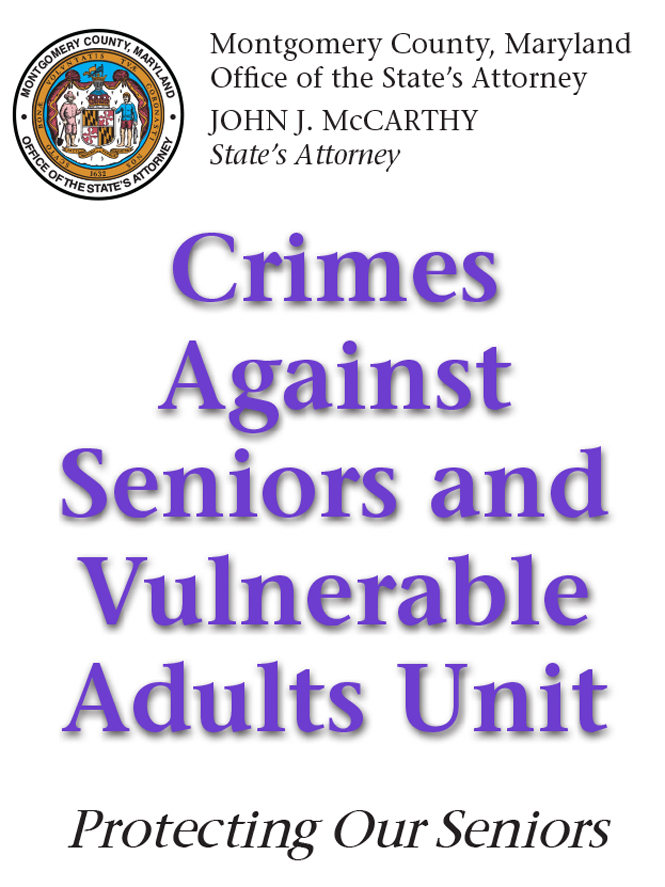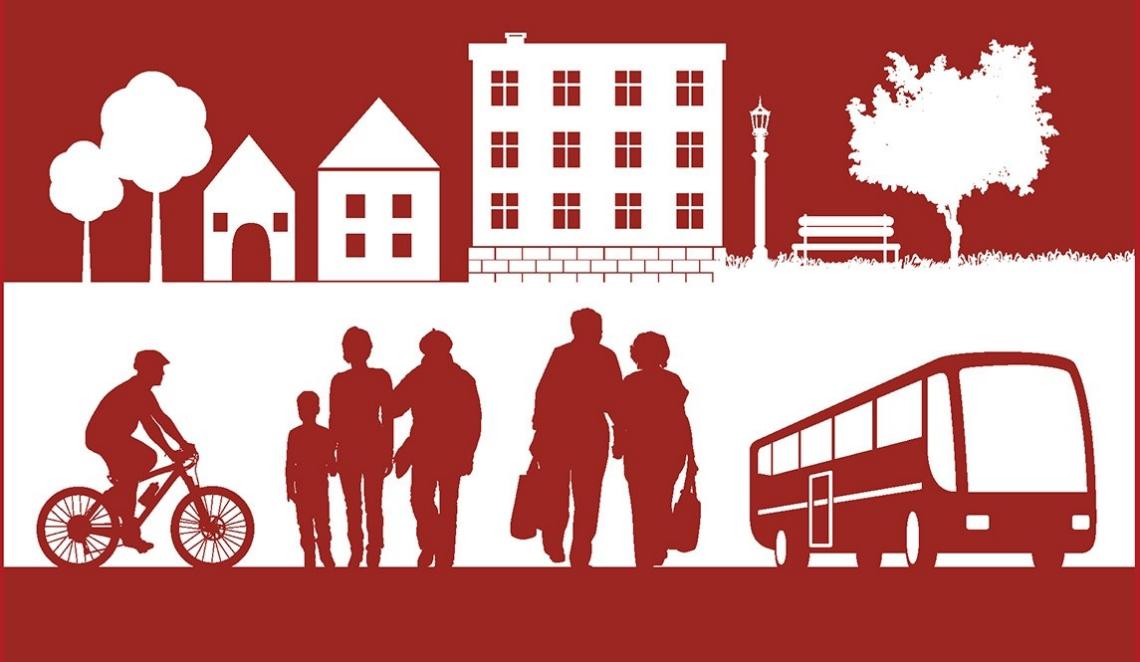AARP Hearing Center


ACTIVITIES AS OF MARCH 2021
Member Profile
Montgomery County, Maryland, which borders Washington D.C. and is the state’s most populous county, is home to some 1 million people.
Initiative Name: Age-Friendly Montgomery County
Network Member Since: 2015
Government Type: An elected county executive and nine elected County Council members
Reason(s) for Joining: By 2030, more than 25 percent of Montgomery County’s residents will be age 60 or over.
Local Leadership: The county’s age-friendly initiative has a 40-member advisory group led by co-chairs Dr. Raymond Crowell, director, Department of Health and Human Services (DHHS) and Robin Riley, director, Department of Recreation, and assisted by Odile Brunetto, chief of DHHS Aging and Disability Services and Marcia Pruzan, senior fellow and program manager of Age-Friendly Montgomery County.
The Financials: “Department directors meet together on a regular basis to exchange information,” says Brunetto. “When the budget is being set up, the county executive asks each director, 'What programs and services are you proposing for our county’s current and future older adult population?'"
Actions and Achievements
Montgomery County submitted its most recent Age-Friendly Action Plan in 2020. In it, County Executive Marc Elrich wrote, “At no time has the benefit of the Age-Friendly process been more evident than during the 2020 COVID-19 public health emergency. Our partnerships of government, business, and nonprofit organizations have resulted in innovative and coordinated response across all domains.”


More from MoCo
The county has submitted several plans and updates to AARP.
These are just some of the numerous Age-Friendly initiatives happening throughout the county.
Collaborations During COVID-19
Knowing how to access services across all domains is a crucial need year-round for all residents, particularly older adults. That need reached critical heights when the global coronavirus pandemic hit.
“We have 10 work groups, each co-chaired by a representative from government and a community partner organization. We trust each other and work together across domains, government agencies and organizations throughout the county,” says Brunetto. “During COVID these collaborations have been especially critical for getting information to residents about how to access essential services, such as food, medical support and transportation.”
“The distribution of food has required a huge effort,” Brunetto adds. “Departments and numerous community partners have pitched in. We have worked closely with the Montgomery County Food Council and many nonprofits to meet the unprecedented challenge, establishing eight food hubs around the county to ensure that food distribution is conveniently located for those in need."
Of great help during the pandemic was the COVID Corps, a group of 16- to 22-year-olds hired by the county primarily to provide technology help to older adults. During the summer of 2020, Corps members provided one-on-one tech support by telephone for 300 older residents. They also provided support for other COVID-related efforts, such as assistance with food distribution.
Welcoming Immigrants
More than a decade ago, Hong Kong native and longtime Montgomery County resident Vivien Hsueh recognized that many older Chinese immigrants were isolated at home due to lacking English fluency and being unable to drive.
Hsueh convinced a local recreation center director to let her begin a social program to involve these elders in the community. The Chinese American Senior Services Association began with 35 members in 2005 and has since grown to 3,000. Led by 250 volunteers, the older residents come together for meals and social, educational, health and wellness activities. The most popular class, pre-COVID, was ballroom dancing. Members use Chinese social media apps to stay in touch.
Seeing the success and knowing that isolation is not unique to the Chinese-American community, Hsueh developed the “Let’s Share” model, which has been used to create a similar program in the South Asian (Indian) community. (That program is called the Jai Ho Group). Another local volunteer started a Muslim program; there are plans to start a Latino program next.
In recognition of her volunteerism, Hsueh received the 2020 Governor’s Service Award for Lifetime Achievement. “I would like to replicate these kinds of programs for more seniors,” she said upon accepting the honor. “Loneliness and isolation are the key culprit for senior depression and health issues. Let’s help to combat that.”
Combating Elder Abuse
In 2014, the Montgomery County Office of the State’s Attorney formed a special unit to investigate and prosecute Crimes Against Seniors and Vulnerable Adults (CASVA).


A New Strategy Succeeds
Since its inception in 2014, the Crimes Against Seniors and Vulnerable Adults Unit in Montgomery County, Maryland, has conducted more than 350 investigations resulting in more than 300 prosecutions.
From the start, CASVA officials took a different approach than most elder-protection programs, says Debbie Feinstein, the unit’s co-chief.
“We’ve looked at the whole picture and have lawyers who are cross-trained in handling financial exploitation as well as abuse and neglect of vulnerable adults. We often see that the financial exploitation will go hand in hand with either criminal neglect or abuse,” says Feinstein. “It’s to the abuser’s benefit, as they gain more financially if the health of the senior or vulnerable adult declines. We made a concerted effort to marry financial issues and neglect, each of which was previously siloed.”
Since its inception, CASVA has conducted more than 350 investigations resulting in more than 300 prosecutions. The county council has rewarded that success by adding more staff to the CASVA team, which Feinstein calls “huge” because it allows the unit being able to expand its investigations.
CASVA hosts a monthly task force meeting, chaired by Feinstein, where multiple government agencies join forces to discuss complex cases
“In almost 60 percent of cases, the perpetrator is a family member,” says Feinstein. “There’s a lot of shame if you don’t want to air family business. Or we see seniors being protective of the perpetrators when the perpetrators are their adult children. Asking an 85-year-old person to testify against their child is very challenging.”
Feinstein emphasizes the importance the community-at-large plays in stopping elder abuse.
“Community actually acts as an effective deterrent to elder abuse, because an abuser is going to look for someone that is either already isolated or that they can isolate,” Feinstein explains. “Community centers, book clubs — those things really help that engagement with others and help diminish the risk of being a victim of elder abuse.”
Elder abuse crimes are vastly underreported, with some studies estimating that only 1 in 24 cases of abuse or neglect are disclosed. “COVID has only exacerbated these crimes,” says Feinstein. “There's so much isolation. The vast majority of elder abuse is reported by someone other than the seniors themselves. It's really on all of us to be aware and pay attention.”
Redirecting 911 Calls to Ensure the Right Response
The Mobile Integrated Health (MIH) program was designed to identify people who frequently but needlessly call 911 and instead connect them with social services more appropriate to their condition.


MIH, founded in 2017, is a collaboration between the county’s Fire and Rescue Service and Department of Health and Human Services, as well as several hospital and social care agencies. ”We track over 800 patients and their system utilization at any given time,” said MIH manager Avital Graves. “Our full complement of staff includes a manager, data analyst, community health nurse, social worker and a part-time paramedic.”
The MIH program reduces unnecessary calls to 911 and helps ensure that real emergencies are addressed in a timely manner.
The frequent callers tend to be economically disadvantaged and, often, use hospital emergency departments for their primary care. An informal study by the Fire and Rescue Service found that many callers have chronic health conditions, behavioral health conditions and/or substance dependencies, none of which are successfully addressed for the long-term by repeated 911 calls and visits to hospital emergency rooms.
“That’s why an important part of the program involves health care workers making home visits to these patients to determine the appropriate care,” says Brunetto.
“We want people to call 911 if it’s a real medical emergency. But most of these calls have absolutely nothing related to emergency. Every time they call it means somebody else with a real emergency has to wait longer.”
“MIH is pursuing several pilot programs, including the introduction of a nurse practitioner at several nursing homes,” adds Graves. “The nurse practitioner was able to treat patients in place for minor ailments, instead of transporting them to the hospital.”
Independent Living
The Department of Housing and Community Affairs, a leader of the county’s age-friendly housing work, and other government departments are partnering with independent living communities throughout the county. The purpose is to ensure that the older residents and property managers receive the information they need about accessing county resources, programs and services.
Leslie Marks, a senior fellow in the department who focuses on education and training, describes her job as “promoting the human services side of senior housing.”
Along with other organizations, the department partnered with Montgomery College to create training programs. Understanding Aging, the effort’s 10-module certificate course, is geared toward senior housing staff and focuses on ways to recognize and manage the challenges of working with older adults.
Lessons Learned (and Advice for Others)
Montgomery County is home to people from at least 100 countries.
“Communications is our biggest, continuing challenge because we have so many languages here,” says Brunetto. Translating material quickly is not so easy to do. We hear a lot of, 'Gee, I never heard about this program. If I had known about it three months ago, it would have made my life so much easier.’”
Another issue is the instability of the local population. “We’re a transient community. People come and go all the time,” says Brunetto. “You constantly have to inform new residents about what’s going on and where they can access services.”
Among the benefits of engaging in age-friendly work: “We surveyed the age-friendly team about two years ago to see how they liked the age-friendly process," says senior fellow Marcia Pruzan. "We got really positive feedback that they loved the ability to share with each other. For many, it was the first time they’ve been able to get out of silos and hear what other parts of the government and our community partners were doing that connected with what they were doing.”
Related Links
- Visit AARP Maryland
- Learn about the AARP Network of Age-Friendly States and Communities
- Check out the network's Member List
- Find more Age-Friendly Member Impact and Achievement Profiles
Reporting by Amy Lennard Goehner































































